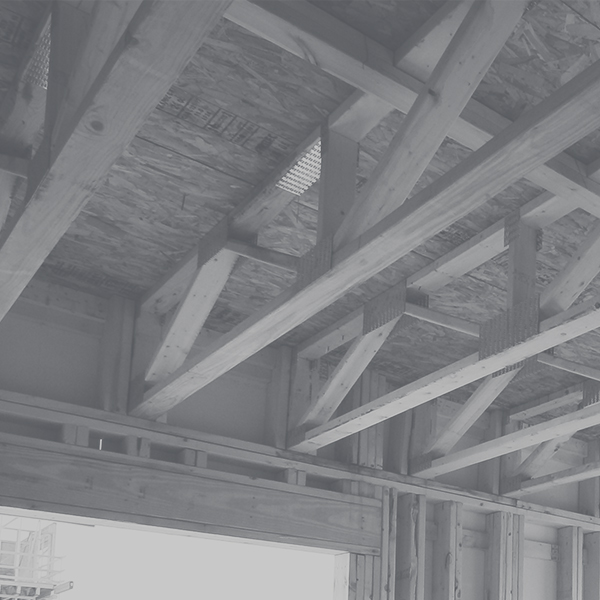In the past year, we’ve seen incredible turbulence in materials pricing + availability. Many long-standing rules governing economy in framing are no longer firm. Now, in the wake of lumber prices dropping from spikes of eight times their original cost, we reflect on the interesting paths we’ve taken to efficient, code-compliant structural design. While some markets may be leveling out, adapting to sudden, extreme materials shortages remains a crucial survival skill. It’s an exciting time to be a structural engineer. Fortunately, problem solving is the reason most of us got into the game.
Here are some key focus areas that have helped Schaefer adapt. As in most cases, an open-minded, collaborative approach is essential to surviving + thriving when the rules change.
New Projects in the New Market
Early collaboration
Many projects benefit from constant collaboration, but these days, early collaboration is the name of the game. An up-front meeting engaging the owner + general contractor with the design team encourages open dialogue which facilitates early, informed choices that can be as impactful as changing the building type. While our experience + market research give us confidence in our framing approach, there’s no replacement for seeking timely input from the people buying + building the structure, especially when the local materials availability + labor balance are evolving. Listen actively + engage them in finding the best solution.
Early involvement of subs, like truss designers, can lead to more efficient, innovative design, and give early warning of new limitations (e.g. long-span truss capacities could be affected by the shortage of high-quality materials, prompting earlier discussions about framing depth + direction or negotiating intermediate bearing points).
The design team must also prepare for front-loaded schedules as developers + owners increasingly request very early bidding documents to support GMP contracts. This often requires that the entire design process be rearranged. Getting clarity on the requested scope + providing transparency in the level of completeness + coordination is important to providing useful early information in these documents.
While these strategies require the design team to think outside the traditional design process, they have the added benefits of building partnership, perspective + trust that make the team more adaptable.
Design for flexibility
Understanding that the materials shortage is not constant or confined to any one component is important to providing flexibility in design. Anticipating limitations in available lumber species or grades and dropping headers to optimize sizes is a no-brainer, but considering which other structural elements may also fall prey can require more forethought. For example, if exterior shear walls that would have traditionally used the standard exterior OSB sheathing are a high-cost component now, what would it take to eliminate them? Finding out requires considering the proposed alternate materials, the anticipated framed cost of alternate structural detailing and the impact on architectural detailing (especially at transitions between materials). Think ahead, get creative and don’t lose sight of framing simplicity while chasing economy.
Collaborate to focus on overall economy
An early structural + architectural focus on overall economy helps the design team make informed, cost-saving choices on the building’s layout while minimizing impact on the building’s function + aesthetic. Reviewing higher-cost characteristics (e.g. building offsets + floor-to-floor alignment at bearing points) and discussing simple structural adaptations can help offset the heavy cost of materials while the design is still fluid.
Existing Projects: Stay Nimble
While the benefits may clearly outweigh the costs of modifying new designs affected by volatile pricing, managing the fall-out on projects that are currently underway can be much trickier.
Do your research
Building a solid knowledge base of alternate materials helps the design team respond quickly when a switch is proposed. Alternate products may suddenly become competitively priced but may require extra leg-work to determine if they can pull their weight in place of the framing that formed the original basis of design (e.g. substituting non-wood exterior sheathing with different shear capacity at shear walls originally designed with OSB). Leaning on the manufacturer’s engineering team can help speed up the analysis; they are typically eager to provide the required data, comment on specific detailing and prove their product’s worth.
Lean on your team
When your own experience with a special material or product is limited, lean on your team. At Schaefer, we pride ourselves on our diverse experience, open collaboration + creativity. Identifying potential pitfalls + special considerations (e.g. the extra-long lead times not clearly advertised with specialty products or the additional detailing required to maintain wall ratings using a revised material) is often a group effort relying on collective experiences on recent projects.
Talk it through
Pivoting to evaluate alternatives late in the game requires strong partnership + constant collaboration within the design team. Late revisions often affect the design in ways that aren’t apparent to those working independently. Jumping on a quick screen share is the best way to work through many changes together, and these days it’s even easier than picking up the phone. A focus on efficient communication makes all the difference in this kind of problem-solving, especially when the request is red-hot.
Future Trends
All the strategies listed above will continue to serve us as we transition into the much-anticipated next stage: market correction.
Many market analysts are optimistic for a turning tide as 2021 comes to a close. While dimension lumber pricing has already dropped significantly from its pandemic high + the shipping crisis driving much of the recent instability is resolving, the single-family housing market continues to put pressure on the commercial industry, and the price of engineered wood products like OSB + LSL remains sticky.
No matter how incremental our recovery, our improved capability to collaborate + orient to the unique + changing needs of each project will position our teams for success. The benefits of our evolution are here to stay, and will help us meet our new challenges (e.g. the steel bar joist + steel deck shortages driven by the e-commerce market + the explosive growth of senior living projects – check out our spotlight here). We’ve proven we can emerge smarter, more adaptable, with stronger relationships and ready as ever to lead the field.




